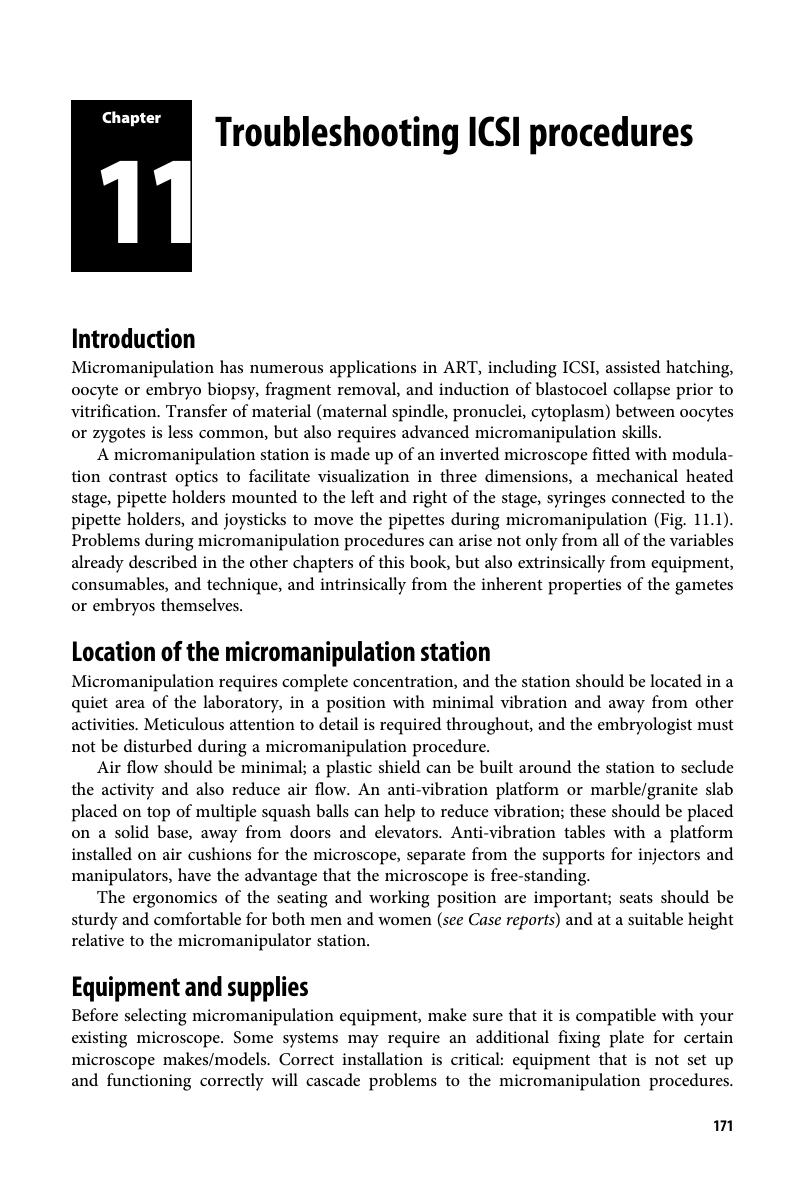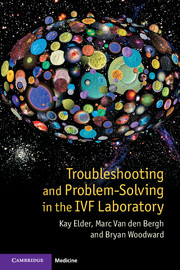Book contents
- Half title page
- Title page
- Copyright page
- Dedication
- Frontispiece
- Contents
- Contributors
- Preface
- Book part
- Chapter 1 Introduction
- Chapter 2 Quality control, certification, and accreditation
- Chapter 3 The IVF culture system
- Chapter 4 Osmometry
- Chapter 5 pH regulation in gamete and embryo culture systems
- Chapter 6 Temperature control in the IVF laboratory
- Chapter 7 The effect of light on embryos and embryo culture
- Chapter 8 Gases, air quality, and volatile organic carbons (VOCs)
- Chapter 9 Infections in IVF culture
- Chapter 10 Troubleshooting a cryopreservation system
- Chapter 11 Troubleshooting ICSI procedures
- Chapter 12 Managing risk in an IVF laboratory
- Index
- References
Chapter 11 - Troubleshooting ICSI procedures
Published online by Cambridge University Press: 05 July 2015
- Half title page
- Title page
- Copyright page
- Dedication
- Frontispiece
- Contents
- Contributors
- Preface
- Book part
- Chapter 1 Introduction
- Chapter 2 Quality control, certification, and accreditation
- Chapter 3 The IVF culture system
- Chapter 4 Osmometry
- Chapter 5 pH regulation in gamete and embryo culture systems
- Chapter 6 Temperature control in the IVF laboratory
- Chapter 7 The effect of light on embryos and embryo culture
- Chapter 8 Gases, air quality, and volatile organic carbons (VOCs)
- Chapter 9 Infections in IVF culture
- Chapter 10 Troubleshooting a cryopreservation system
- Chapter 11 Troubleshooting ICSI procedures
- Chapter 12 Managing risk in an IVF laboratory
- Index
- References
Summary

- Type
- Chapter
- Information
- Troubleshooting and Problem-Solving in the IVF Laboratory , pp. 171 - 188Publisher: Cambridge University PressPrint publication year: 2015

